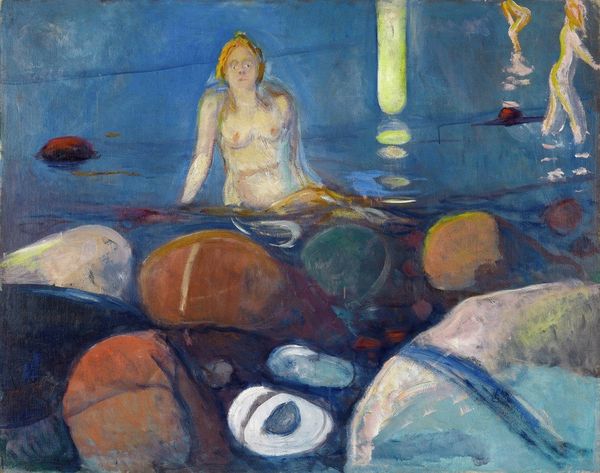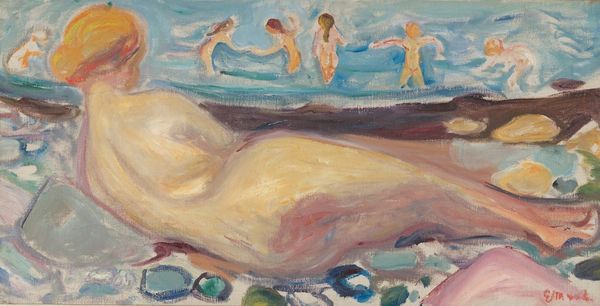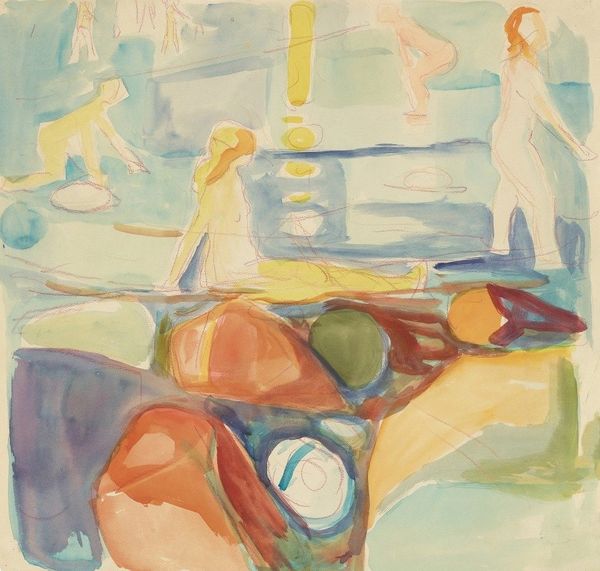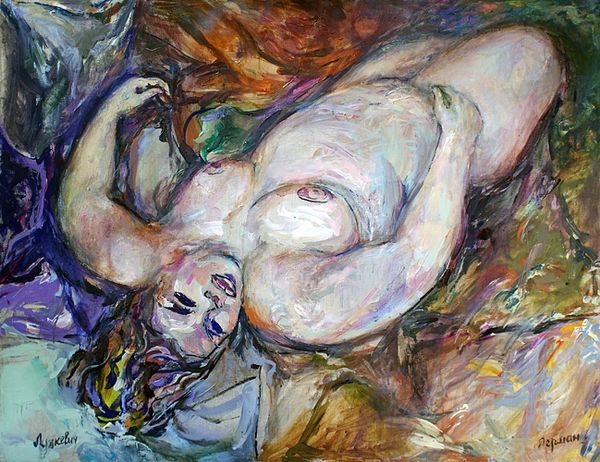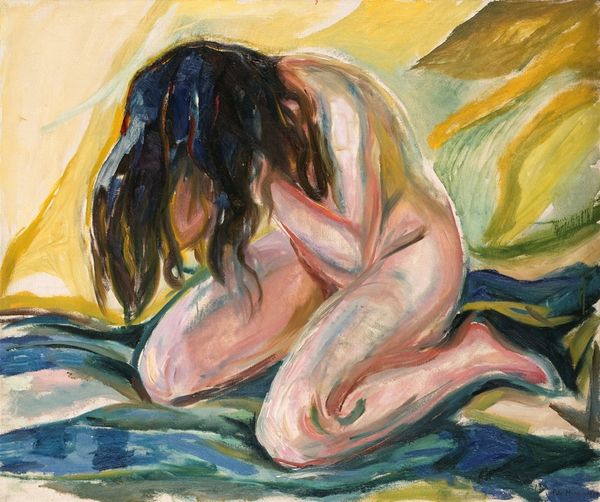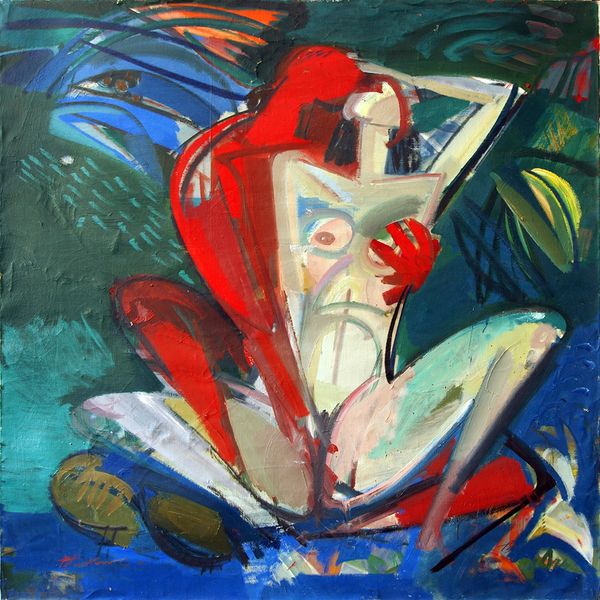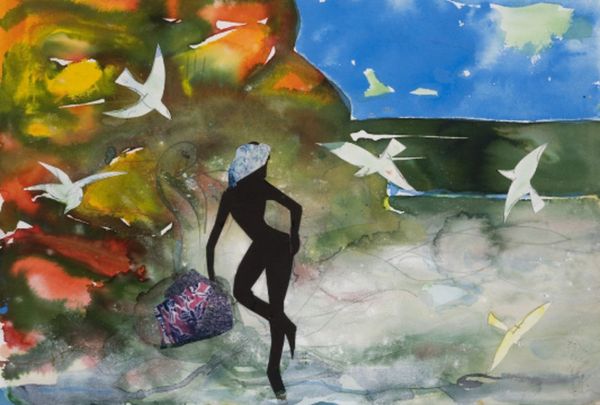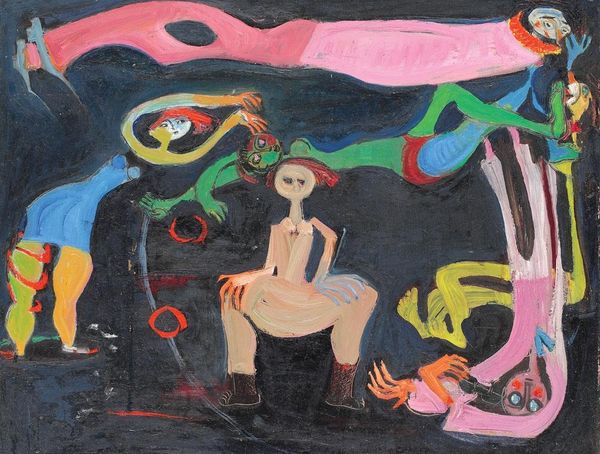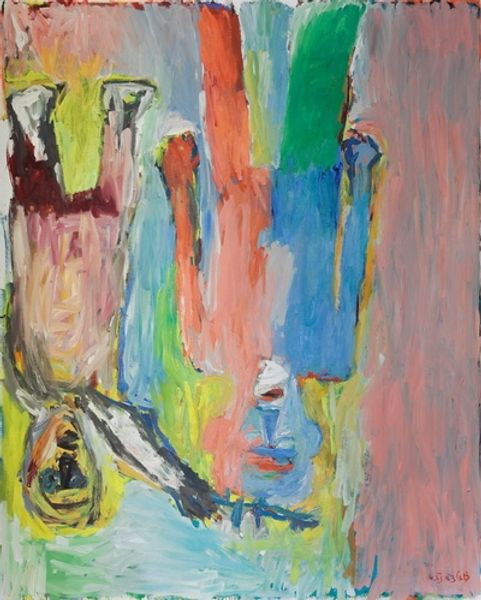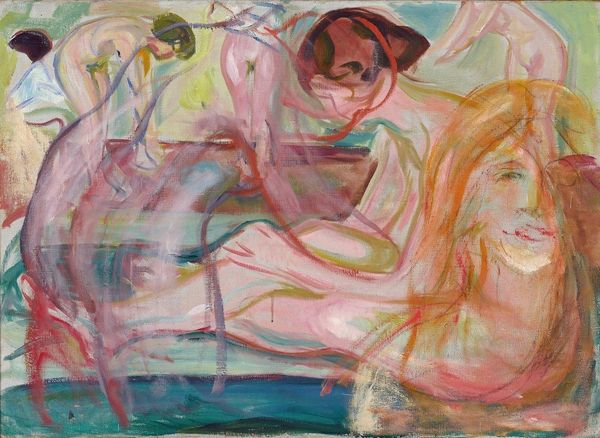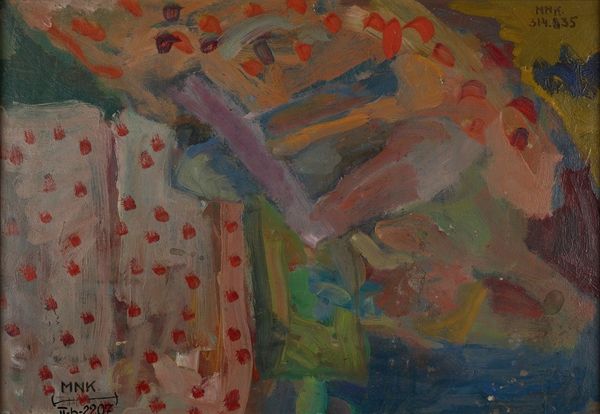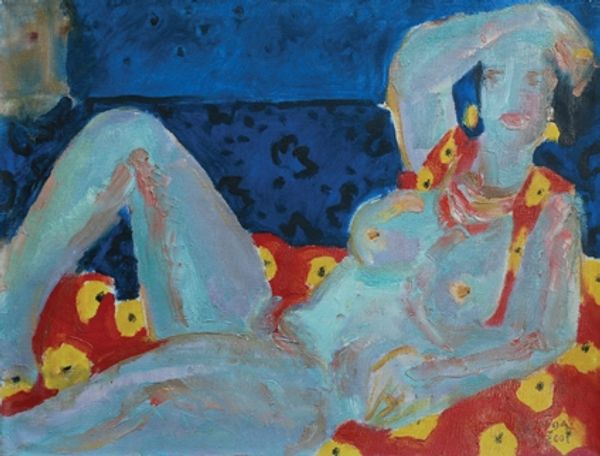
Copyright: Public Domain: Artvee
Editor: Here we have Edvard Munch’s "Bathing Woman and Children," painted sometime between 1930 and 1935. The blues are so intense. It feels less fraught than some of his more famous works… almost peaceful, but still with that recognizable Expressionist brushstroke. What draws your eye in this painting? Curator: I'm drawn to the way Munch uses water as both a barrier and a connection. The bathing woman is both within and separate from the element, which suggests a complex psychological space. Have you noticed how the water distorts and almost abstracts the figures further back? Editor: Yes! Almost like reflections. Curator: Precisely. Water is a primal symbol – cleansing, birth, death – it can mean so many things. And what of the other figures? They're not as clearly defined, almost ghost-like. Do you think they're memories, fantasies? Editor: That's interesting…they feel less real, somehow, so memories perhaps? Is he exploring the transience of life through this imagery? Curator: That is a fine interpretation, considering the period, following close to his ill health at the end of the 1920s. The use of the nude has its own art historical significance, and water, for Munch, was a conduit to life itself. The overall message is deeply evocative, even mystical in tone. Editor: This has given me a completely new perspective on the artwork and the depth that Munch has as an artist! Curator: Me too! Considering water and the symbolisms here give the art and context a whole new perspective.
Comments
No comments
Be the first to comment and join the conversation on the ultimate creative platform.
